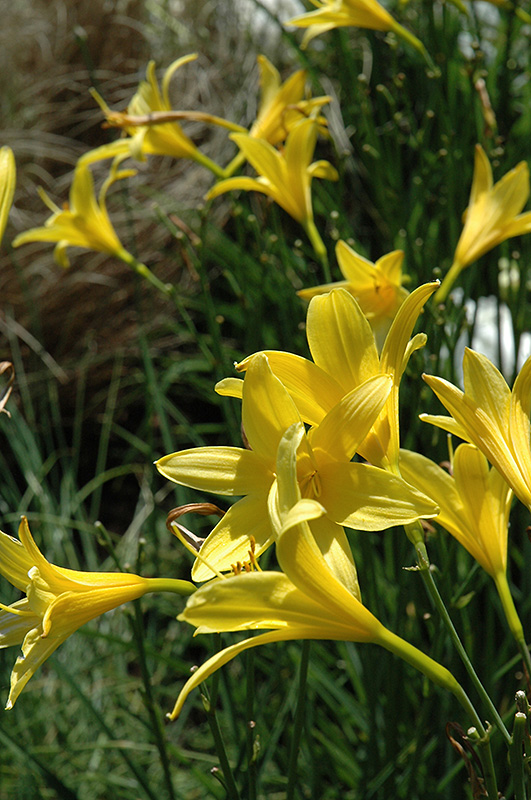PLANT FINDER
Height: 3 feet
Spacing: 30 inches
Sunlight:
![]()
![]()
Hardiness Zone: 2a
Other Names: Hemerocallis flava
Description:
A lovely early bloomer with bright lemon-yellow flowers with a strong citrus fragrance; will slowly spread to form a colony and the flowers offer great contrast to the massed dark green foliage; diploid
Ornamental Features
Lemon Daylily features bold fragrant lemon yellow trumpet-shaped flowers with light green throats at the ends of the stems from late spring to early summer. The flowers are excellent for cutting. Its grassy leaves remain dark green in color throughout the season.
Landscape Attributes
Lemon Daylily is an herbaceous perennial with a shapely form and gracefully arching foliage. Its medium texture blends into the garden, but can always be balanced by a couple of finer or coarser plants for an effective composition.
This is a relatively low maintenance plant, and is best cleaned up in early spring before it resumes active growth for the season. It is a good choice for attracting butterflies to your yard. It has no significant negative characteristics.
Lemon Daylily is recommended for the following landscape applications;
- Mass Planting
- General Garden Use
- Groundcover
Planting & Growing
Lemon Daylily will grow to be about 30 inches tall at maturity, with a spread of 3 feet. When grown in masses or used as a bedding plant, individual plants should be spaced approximately 30 inches apart. It grows at a medium rate, and under ideal conditions can be expected to live for approximately 10 years. As an herbaceous perennial, this plant will usually die back to the crown each winter, and will regrow from the base each spring. Be careful not to disturb the crown in late winter when it may not be readily seen!
This plant does best in full sun to partial shade. It is very adaptable to both dry and moist locations, and should do just fine under typical garden conditions. It is not particular as to soil type or pH. It is highly tolerant of urban pollution and will even thrive in inner city environments. This species is not originally from North America. It can be propagated by division.


